Why Figma’s future success doesn’t rely on designers

Figma (FIG) held celebratory festivities out on the cobblestone streets of New York City’s financial district this morning, and rightfully so. Your favorite designer’s favorite design software company debuted on the New York Stock Exchange today with an initial public offering (IPO) of $98—triple its projected price of $33—and landing a valuation of $19.3 billion.
Last year, Figma rebranded for growth mode. It doubled its core products from four to eight, and launched new AI features to expand its user base and product capabilities to get more people into the product—and stay there. Today, those product-led growth decisions delivered in a ten figure payoff. Figma, once squarely focused on professional designers, is now aiming to be the software platform for everyone on a team.
“The last six years I have been working on this has been focused on the singular mission of going from idea all the way to the final product and […] bringing more people into the process,” Chief Product Officer Yuhki Yamashita said while sitting in a quiet conference room in the New York Stock Exchange. “It’s been nice to see how design has become something that everyone cares about—and not just designers.”
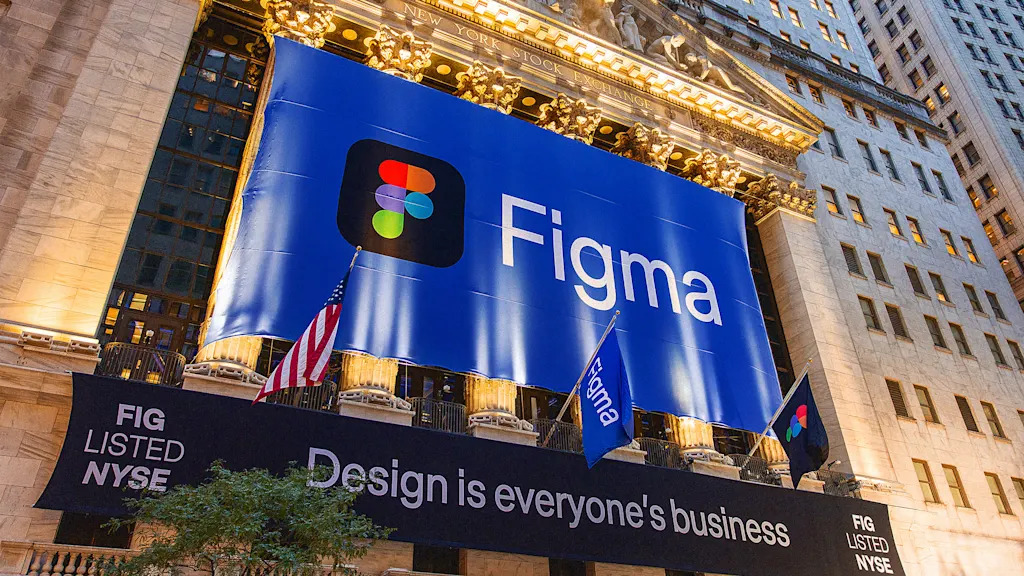
Big products, big demand
Figma’s IPO, which as of Thursday was 40 times oversubscribed—meaning demand for shares was 40 times greater than what was available—also marks the “most richly valued enterprise software IPO since 2021,” Matthew Kennedy, senior strategist at Renaissance Capital, told Investor’s Business Daily.
Not bad for a company that spent a mere year and a half regrouping from a failed $20 billion acquisition deal with Adobe in late 2023. (Adobe’s stock dropped 5.5 points today, at time of writing.)
Much of that comes down to demand for its software. Figma says it has a “total addressable market” of $33 billion across the “global workforce engaged in software design.” Seventy-six percent of customers use two or more Figma products, an indication that cross-functional teams are a core consumer as much as designers at this point.
In fact, two-thirds of its 13 million users are non-designers, like writers, marketers, project managers, and developers. And the product is everywhere: Figma claims in its prospectus that 95% of Fortune 500 companies use its software, including Google, Uber, JetBlue, Netflix, Airbnb, and Duolingo.
Noting the quantity of non-designers on the platform, Yamashita asked: “How can we do more for them and meet them where they are?”
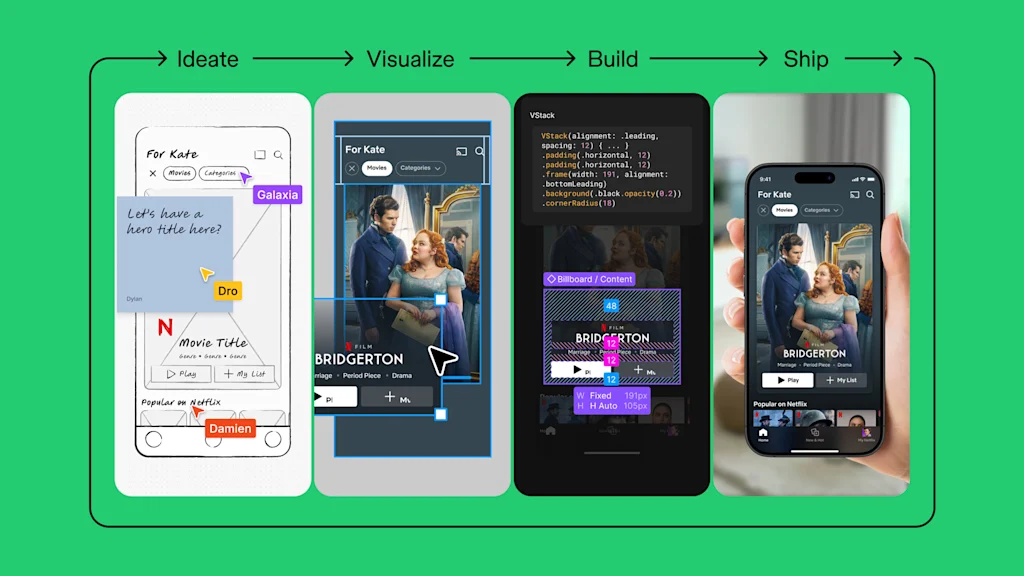
A better tool
Among professional designers, the sentiment is that Figma is simply better than everything else on the market. “It’s the most powerful and complete design tool,” says Pentagram partner Andrea Trabucco-Campos. “Figma did establish a whole new paradigm that will be around for the foreseeable as the de facto tool for collaboration and design.” He also noted the product has its limits, and doesn’t replace InDesign, Photoshop, or Illustrator.
Figma set a new software standard when it launched the multiplayer, in-browser app and web interface design platform called Figma Design in 2012, which provided a low barrier to entry and a super easy way for new users among community-driven professional designers to share their work—simply share a URL. No app download required. That made it easier for non users to play around, and eventually buy in.
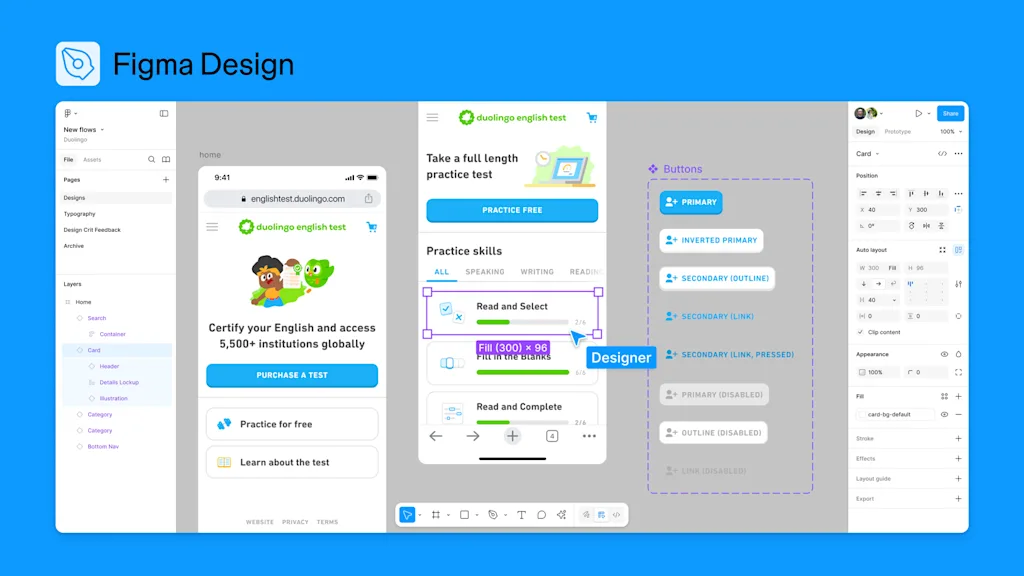
It subsequently launched FigJam (whiteboarding) and Figma Slides, without much buzz, but this year launched four more products: Figma Make (creates AI-generated code), Figma Sites (creates websites), Figma Buzz (creates marketing assets), and Figma Draw (for making free-form vector illustrations), all of which elbows up against the use cases of a slew of companies: WordPress, Squarespace, Wix, Canva, Adobe Express.
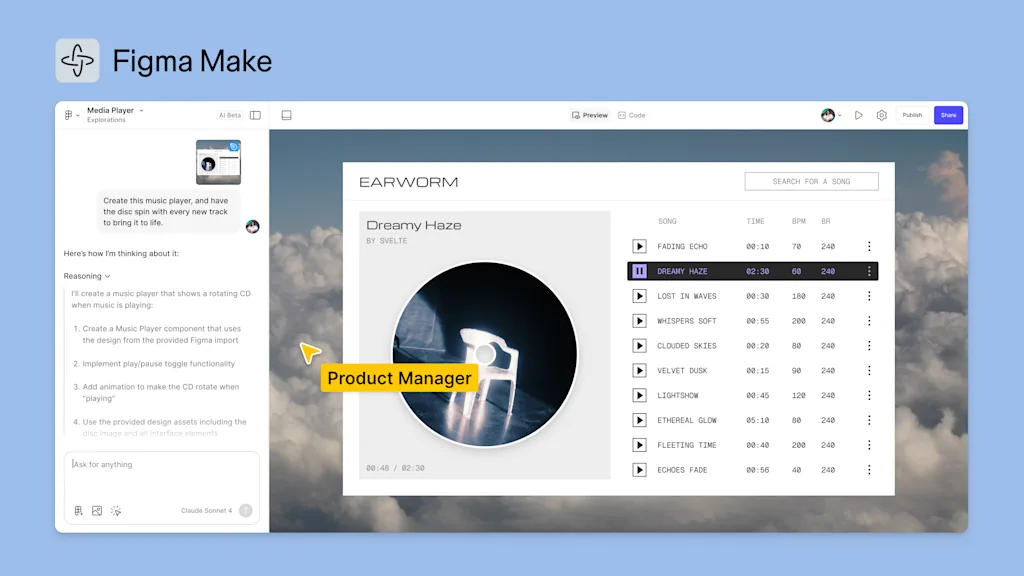
The goal is to expand its founding purpose to become a multi-product company for multi-role creative teams. Figma aims to reach an expanded audience that includes developers (a third of its current user base) and other team members like project managers, who help bring design deliverables to life.
Seeing an idea through to launch “requires an entire team to go through that process to make the best products, and so we are trying to fill all those different gaps,” says Yamashita. “If we can welcome more people into the process and actually really go deep into their workflows such that they are relying on Figma every single day, that is a really great place for us to be.”
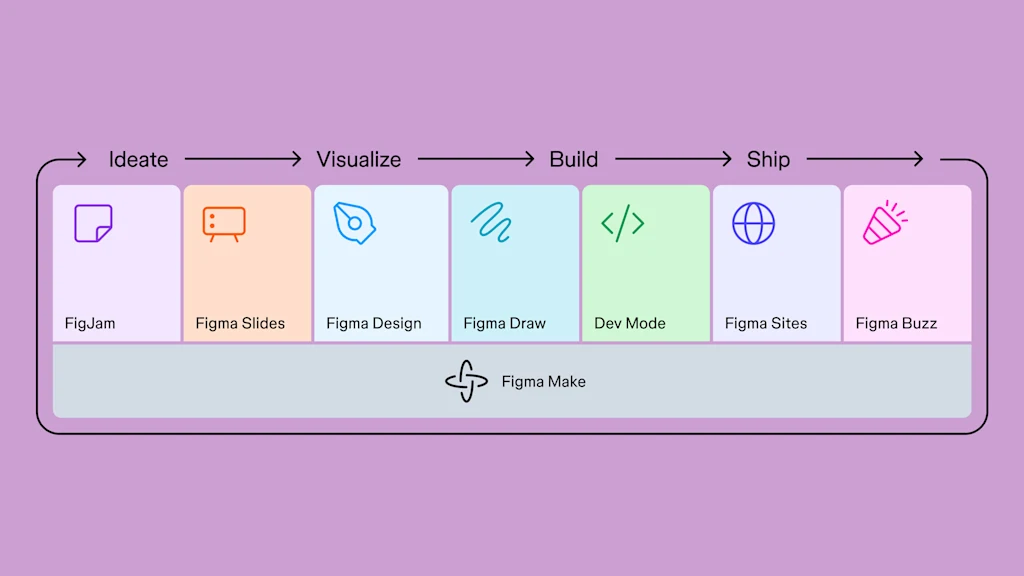
What differentiates Figma from its competitors who are also trying to claw their way to becoming every creative team’s everything app, according Yakashima, is its “exclusive focus on the product team.”
Designers tend to work ahead, he says, referring to how users started created slides in Figma before the actual product existed, and that informs the company’s product decisions. Figma Slides and Figma Make provide easy entry points for non-designers because the tools are already familiar to them, but it brings them into a platform where designers already create sophisticated work, he says. “That’s what we want to, you know, really encourage and capitalize on.”
Considering the hype at NYSE today, investors seem to strongly believe it’s well-positioned to do that.
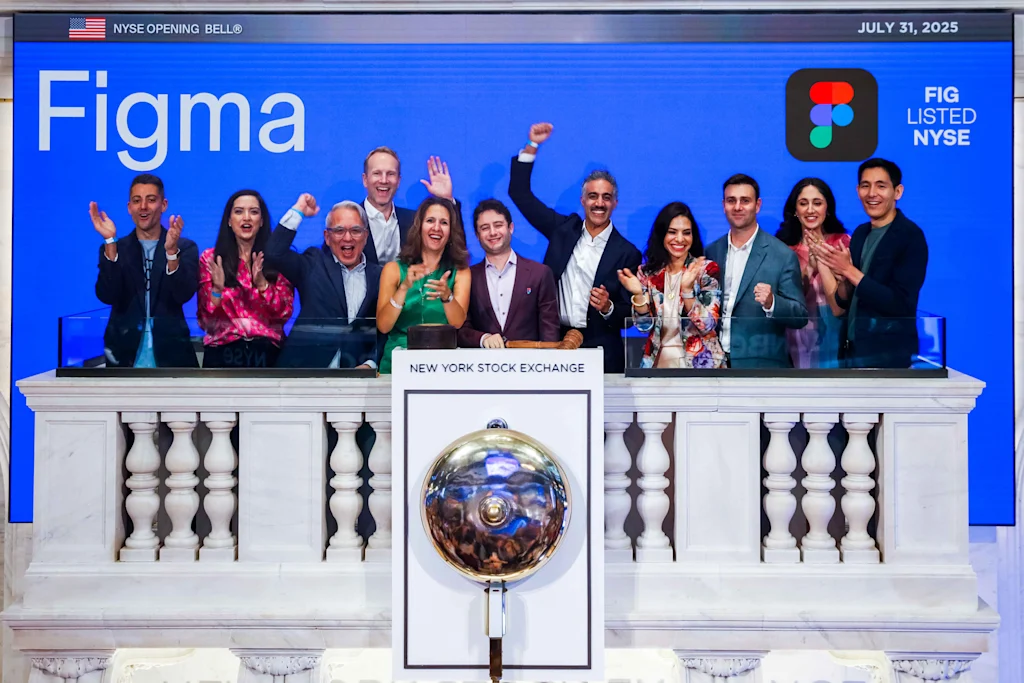
Figma’s growth plan
Now, as the rise of AI is causing distinct roles and longstanding processes within teams collapse, Figma offers a clue to understanding what the future of design software looks like: expansive, holistic, turnkey. It’s less about design work specifically, more about workflows.
“We live in a world now where we have to recognize that the boundaries between roles are blurring,” says Yamashita. “So rather than saying, ‘hey, it’s just one kind of persona or target audience that is important,’ we have to be focused on the activity that they are doing—that activity is building and designing products.”
Any software company worth its salt wants to own as much of the work process as it can, soup to nuts, because that’s the best way to retain users. Everyone from Adobe to Canva are trying to do this through product extensions. And Figma has plans to rapidly expand its offerings.
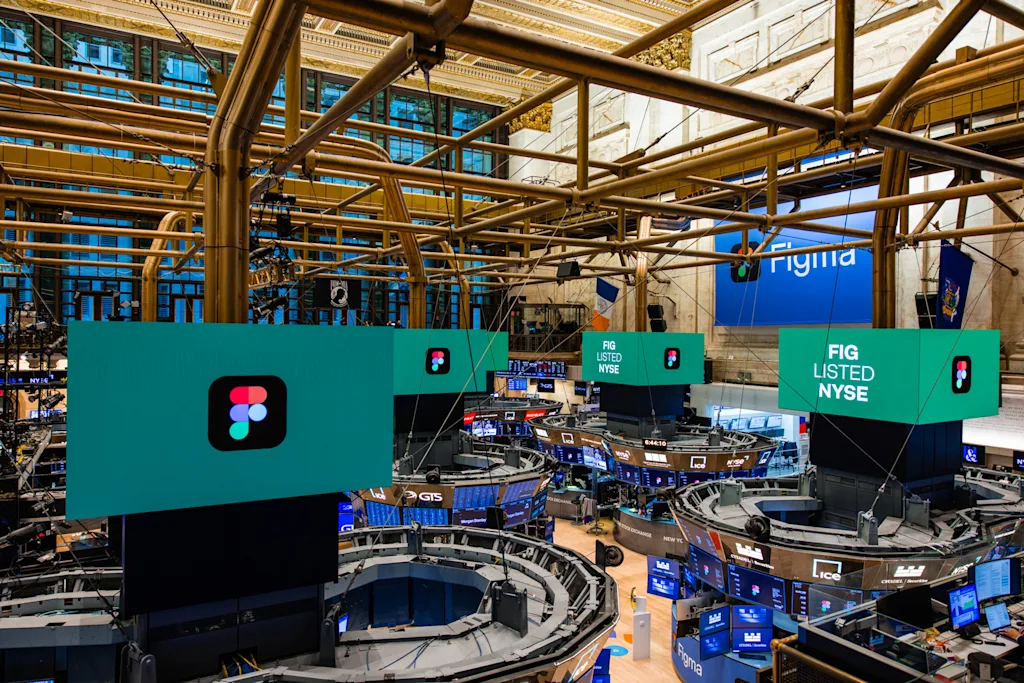
The company’s growth plan, according to its SEC filing, has five pillars: maintain a rapid pace of product innovation, convert new and existing users into paid (the platform has a freemium model), grow within current customers, extend the platform, and expand its international footprint.
“You should know that while we’ve built an efficient business, our primary goal is not efficiency,” founder Dylan Field wrote in the filing. “Our goal is to achieve long-term growth by supporting the rapidly evolving needs of designers.” He adds, “Expect us to take big swings when we see a chance to invest in our platform or pursue M&A at scale,” referring to mergers and acquisitions.”
On the product side, that means continuing to rapidly build and launch products that address product teams’ ever-changing workflows. The company also plans to continue investing heavily in AI, which Field described as a possible “drag” on its efficiency in the short term.
As Figma enters public markets, its strategic advantage over competitors is collaboration, says Yamashita. “We believe the future of building is one that is collaborative and highly visible,” he says… “If we can help entire product teams build faster or build better products faster, then I think that is something that is valuable for everyone, right. Valuable for customers, it is valuable for us.”
What's Your Reaction?
 Like
0
Like
0
 Dislike
0
Dislike
0
 Love
0
Love
0
 Funny
0
Funny
0
 Angry
0
Angry
0
 Sad
0
Sad
0
 Wow
0
Wow
0





















































![Olesia Glants turns the dancefloor into a sanctuary with new single “Save Me” [Music Video]](https://earmilk.com/wp-content/uploads/2025/08/A-2-800x561.jpg)








































